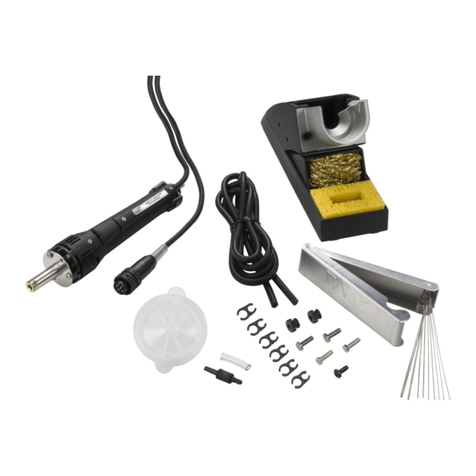
TITLE PAGE
General Information
Introduction...........................................................................................................3
Specifications .......................................................................................................3
Parts Identification................................................................................................4
Safety.............................................................................................................................5
Safety Guidelines.................................................................................................5
System Set-Up...............................................................................................................6
Tip & Tool Stand......................................................................................................6
Handpiece Connection............................................................................................6
TEKLINK..................................................................................................................6
System Power Up ..........................................................................................................7
Set-Up Mode..................................................................................................................7
Introduction...........................................................................................................8
Entering Set-Up Mode..........................................................................................8
Password..............................................................................................................8
Temperature Scale...............................................................................................8
Temperature Limits ..............................................................................................8
Offset Constant ....................................................................................................9
Temperature Setback...........................................................................................9
Auto Off ...............................................................................................................10
Temperature Display Impedance........................................................................10
Exiting Set-Up Mode ...........................................................................................10
Heater Burn In Procedure.............................................................................................10
Quick Start Procedure...................................................................................................11
Operation.......................................................................................................................13
Auto Tip Temperature Compensation and Offset ...............................................13
Password.............................................................................................................13
LED Display Normal Operation...........................................................................13
LED Display Temperature Adjust Mode..............................................................14
Vacuum Pump Operation....................................................................................14
Handpiece Vacuum/Pressure..............................................................................14
Temperature Setback Mode................................................................................16
Auto Off Safety System Mode.............................................................................17
LED Display Accuracy.........................................................................................17
LED Message Codes ..........................................................................................17
Corrective Maintenance................................................................................................18
Power Source......................................................................................................18
Handpieces..........................................................................................................18
Factory Settings............................................................................................................19
Definitions......................................................................................................................19
Packing List...................................................................................................................20
Spare Parts ...................................................................................................................20
Service ..........................................................................................................................20
Limited Warranty Form..................................................................................................21
Contact Information.......................................................................................................22
©2004 PACE Inc., Annapolis Junction, Maryland Page 2 of 22
All Rights Reserved




























